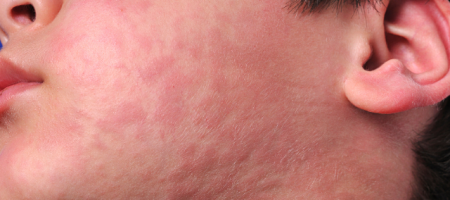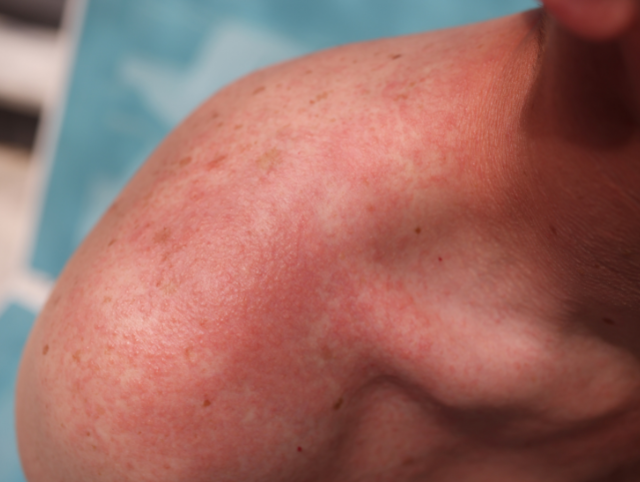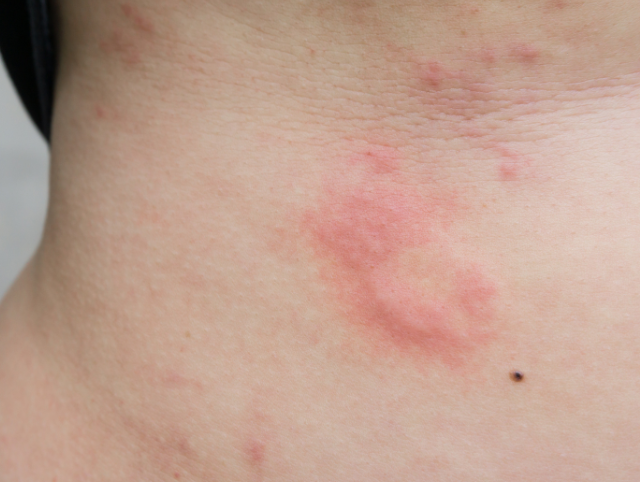Urticaria

Urticaria (commonly referred to as hives) are pink or red itchy rashes, that may appear as blotches or raised red lumps (wheals), on the skin.
When hives first start to appear, they can be mistaken for mosquito bites. Swellings usually disappear within minutes to hours in one spot but may come and go for days or weeks at a time, sometimes longer. In most cases hives are not due to allergy and they can be effectively treated with a non-drowsy antihistamine. When hives occur most days for more than six weeks this is defined as chronic (ongoing) urticaria, which may require additional medication.


Symptoms
Symptoms of chronic hives include:
- Batches of welts (wheals) that can arise anywhere on the body
- Welts that might be red, purple or skin-colored, depending on your skin color
- Welts that vary in size, change shape, and appear and fade repeatedly
- Itchiness (pruritus), which can be intense
- Painful swelling (angioedema) around the eyes, cheeks or lips
- Flares triggered by heat, exercise or stress
- Symptoms that persist for more than six weeks and recur often and anytime, sometimes for months or years.
Causes
The hives rash is caused when the body produces a substance called histamine, which is a protein used to fight off viruses and bacteria.
In most cases, it is not known what triggers this reaction. Sometimes the hives rash happens because of:
- an infection
- immune system disease
- an insect sting or bite
- touching an animal or plant you are allergic to
- allergy to food or medication
- having a dye injected during a radiological test.
In some people, hives may be caused by cold air or water, heat, sunlight, vibration, scratching, exercise, sweating, stress, spicy food, alcohol or coffee.
In children, a virus is the most common cause of hives.
Hives that last for days at a time are almost never due to an allergy, apart from an allergy to a specific medication.
Stress rarely causes hives, but stress can make the symptoms worse.
Treatments
Treatment for chronic hives often starts with nonprescription anti-itch drugs (antihistamines). If these don’t help, your health care provider might suggest that you try another treatment; such as prescription anti-itch drugs.
The usual treatment for chronic hives is prescription antihistamine pills that don’t make you drowsy. These drugs ease itching, swelling and other allergy symptoms. Daily use of these drugs helps block the symptom-producing release of histamine.
If the nondrowsy antihistamines don’t help you, your health care provider may increase the dose or add another type of antihistamine.
For chronic hives that resist these treatments, your health care provider might prescribe a drug that can calm an overactive immune system.
Resources
For further information, you can visit the following resources:

